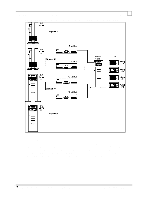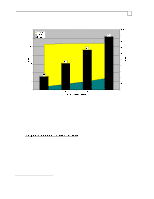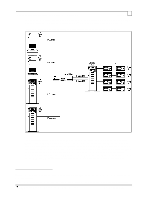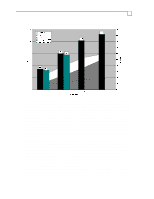Compaq ProLiant 1000 Compaq Backup and Recovery for Microsoft SQL Server 6.X - Page 51
over 75% average usage with just one DLT, Chart 12 - Backup of One Server Across Single 100BaseTX
 |
View all Compaq ProLiant 1000 manuals
Add to My Manuals
Save this manual to your list of manuals |
Page 51 highlights
Compaq Backup and Recovery for Microsoft SQL Server 6.x Page 51 over 75% average usage with just one DLT, and performance gain with multiple DLT's is minimal. Of course using RAID-5 on the tape array does give the benefit of greater data protection. A dump to a disk array, although similarly constrained by the network, yielded slightly different performance than the tape arrays. This variance may be attributed to the difference in data transfer methods: the ARCserve database agent uses multiple named pipe streams to send data to the ARCserve application on the other end; SQL Server is sending a single data stream directly to the Windows NT file system. Although not displayed, the CPU usage at both servers for all transfers was very low, at around 5%. Clearly the network is the bottleneck here, with plenty of system resources left at both servers for processing other jobs. Given the network saturation, such backup jobs should be scheduled during hours of low network use by other applications to avoid interference, or across a dedicated network link. Here we perform the same tests as before, except that the 10Base-T repeater has been replaced with a 100Base-TX repeater. This makes the network capable of 100 Mbps transfers, which should theoretically be 10 times faster than the 10 Mbps transfers shown previously. The results obtained here however, do not follow this oversimplified prediction, as shown by the below chart: Chart 12 - Backup of One Server Across Single 100BaseTX Segment Comparing Chart-12 to Chart-9, the throughput seen while backing up data to a single 15/30-GB DLT drive over a 100 Mbit network is the same as the throughput for backing up to a local DLT drive, using ARCserve. A definite gain in throughput is also seen here by going from a single tape drive to an array (all tape arrays consisted of 15/30 DLT's). The performance of a 3 drive RAID-5 tape array is only slightly less than for a 2 drive RAID-0 array, which is as expected (see the discussion for Chart-9). No throughput gains are seen beyond two drives in RAID-0 however (8.6 GB/hr), and this same performance is seen with the single 35/70-GB DLT which can usually write data much faster. In fact, the performance for 100 Mbit is never more than 3x higher than for 10 Mbit, yet while monitoring the 1997 Compaq Computer Corporation, All Rights Reserved Doc No 444A/0797















